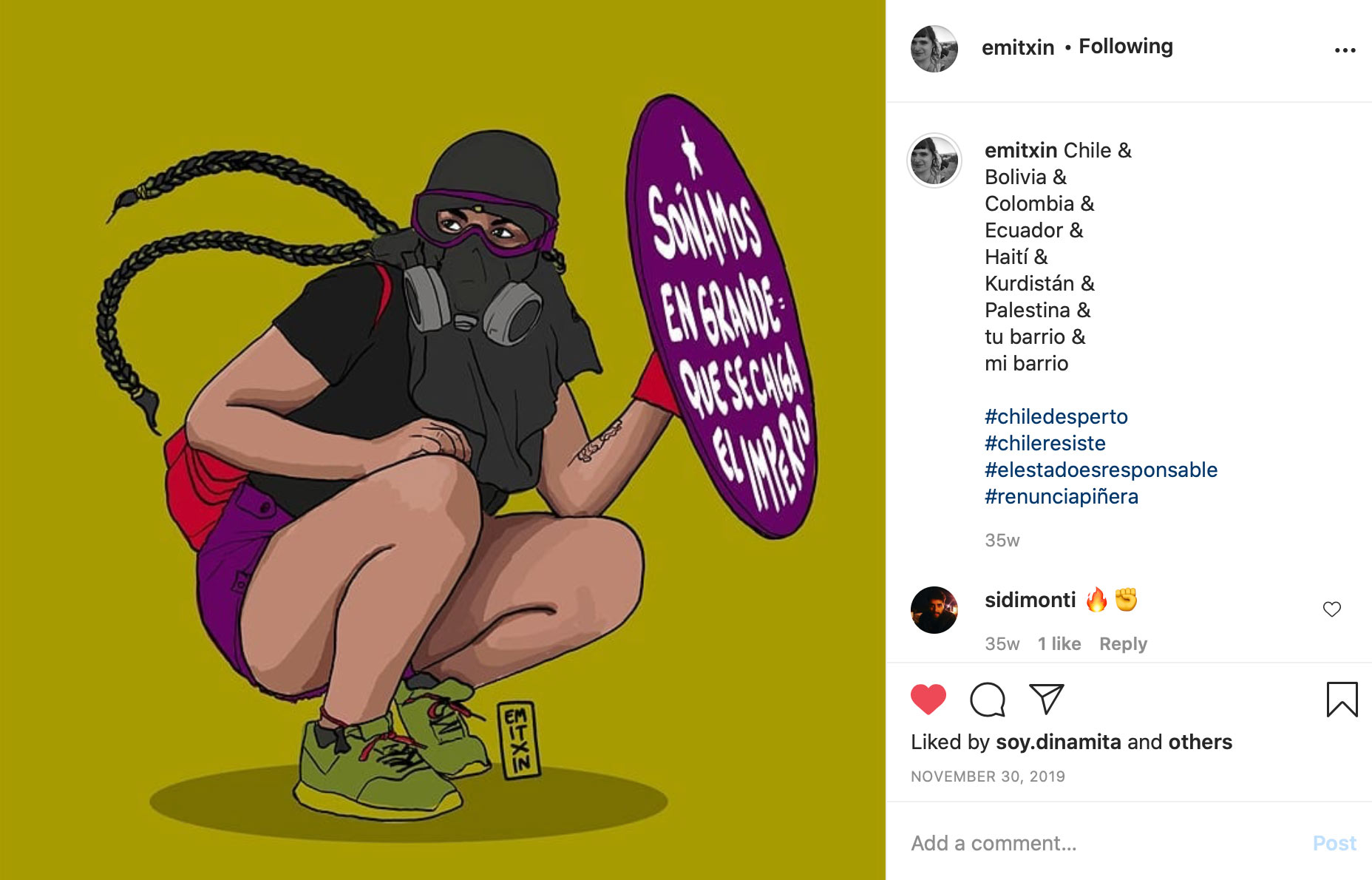
I encountered the liberatory and feminist graphic work of Pilar Emitxin through instagram, where we exchanged some mutual likes and had some of the same people in our networks. I appreciated their bold designs and sharp graphic sense, especially their fierce use of bright colors–a palette so different from my own. Pilar wrote and asked if it was possible to get a copy of The Day Before the Revolution in Argentina, I sent them a copy and asked if they’d be up for an interview on the Justseeds blog, which we then conducted over email. Preparing the questions was a treat as it allowed me to do a deeper dive into their graphics, to spend more time reading explanations, and to note all the small and important signifiers that are present in their work. On top of that, their thoughtful answers highlight the richness and interconnectedness of movements and political graphics happening worldwide.

Will you tell us a little about yourself? Who are you? Where do you live?
Soy Pilar Emitxin, soy ilustradora y diseñadora gráfica. Nací y vivo en Córdoba, Argentina. Realizo gráficas feministas y de lucha, además de tareas de diseño y comunicación para los espacios colectivos que conforman nuestro movimiento en todo el continente, como la Asamblea Ni Una Menos Córdoba, feministas cannábicas, colectivos internacionalistas de solidaridad, medios feministas independientes, etc. También quiero contarles que produzco de manera autogestiva, e intento vivir de esas gráficas, a través de intercambios justos, en piezas accesibles para que todas y todes puedan tenerlas. Calcos, láminas, agendas, playeras, etc. Me considero trabajadora gráfica, en el marco de una generación donde la precariedad estructural es el signo marcante de nuestra experiencia vital.
Soy de un territorio atravesado por el negocio inmobiliario, la represión, la devastación del bosque nativo y el desplazamiento forzoso. Pero también de una organización permanente y extendida en toda la provincia en defensa de los territorios y contra el ecocidio; donde las madres de jóvenes pobres y racializados asesinados por la policía marchan y empapelan la ciudad en contra del abuso estatal; donde las y les feministas creamos redes complejas y ricas de cuidado, sostén e intervención política.
My name is Pilar Emitxin, I am an illustrator and a graphic designer. I was born and live in Córdoba, Argentina. I make feminist and militant graphics, as well as do design work for the collective spaces that make up our movement throughout the continent, such as the Asamblea Ni Una Menos Córdoba, feministas cannábicas, internationalist solidarity groups, independent feminist media, etc. I also want to note that I produce my work politically and autonomously, and I try to live off my work, through fair exchanges and with accessible prices so that everyone can have them. Rubbings, prints, planners, shirts, etc. I consider myself a graphic worker, within the framework of a generation where structural precariousness is the hallmark of our collective experience.
I am from a territory traversed by capitalist development, repression, the devastation of the native forest, and forced displacement. But I am also from a place with ongoing and extensive organization in defense of the territories and against ecocide; where the mothers of poor and racialized youth killed by the police march and wallpaper the city against state violence; where we feminists create complex and rich networks of care, support, and political interventions.

What is your illustration process like?
Primero pienso el mensaje que quiero transmitir, usualmente asociado a debates que estemos teniendo o hechos que me atraviesen. Imagino algunos elementos que tengan que estar presentes para transmitir la sensación que me atraviesa por el cuerpo. Es un proceso muy emocional. Luego, busco referencias de rostros, posturas, miradas. A veces aparece primero la referencia y cuadra con sensaciones que traía conmigo. A partir de ahí, es pura intuición, juego y prueba, con el sentir y la posición política como guías.
First I think about the message I want to convey, usually associated with discussions that we are having or events that have occurred. I try to imagine some elements that have to be present in the design to convey the sensation that runs through my body. It is a very emotional process. Then, I look for references of faces, postures, looks. Sometimes the reference appears first and fits with the feelings I brought with me. From there, it is pure intuition, trial and error, with the feelings and the politics as guides.
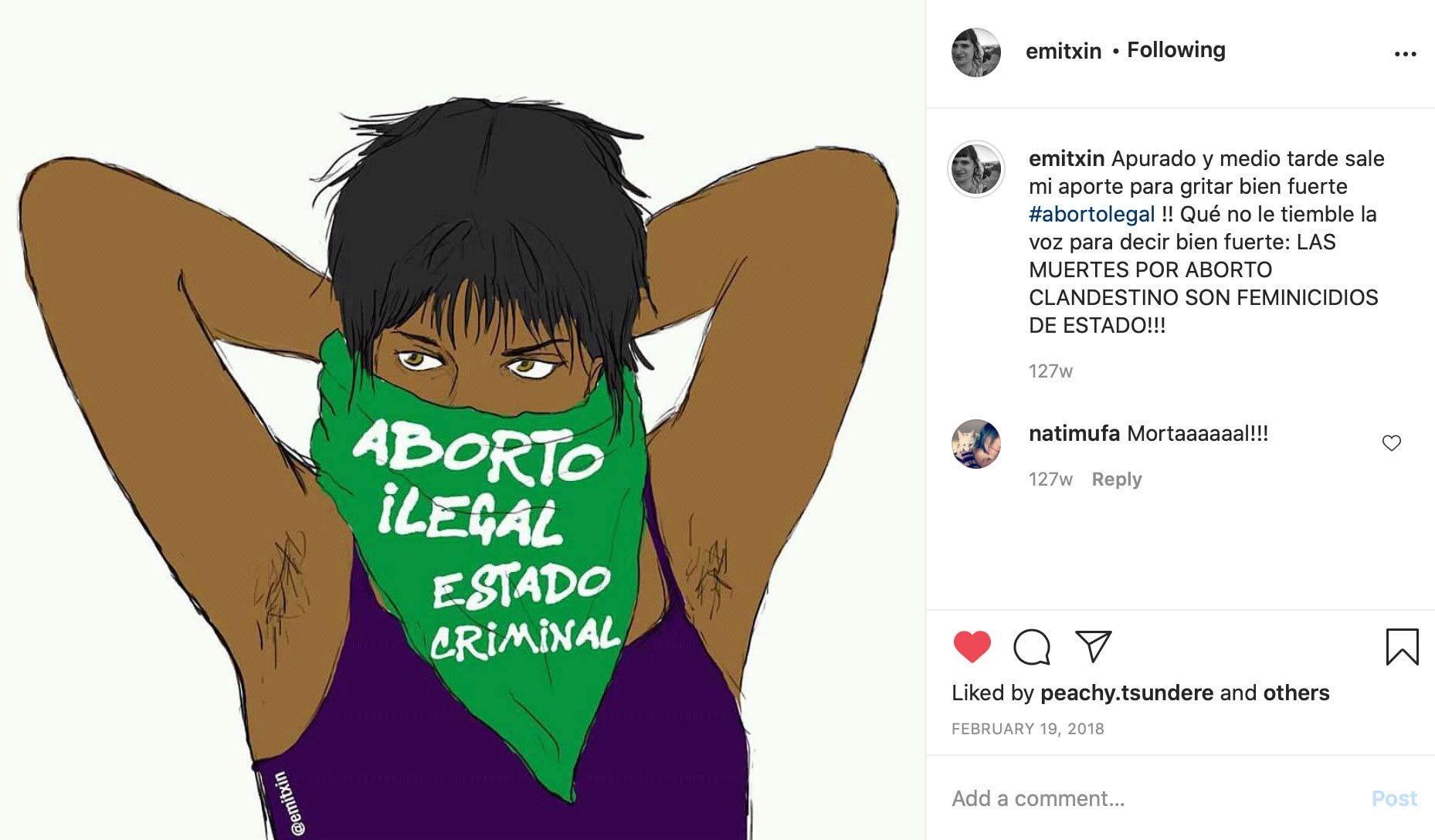
What is important for you to convey in your artwork? What ideas or philosophies is your work built on?
Antes que ilustradora, soy activista feminista y en defensa de todas las formas de vida. En relación al contenido, lo más importante para mí es poder recoger las sensibilidades que nos atraviesan como colectivo. Desde una perspectiva internacionalista, comunitaria, que recupere y reivindique el construir genealogías y construir potencia feminista. Reivindicar la agencia transformadora de las infancias y vejeces, las representaciones identitarias de todes quienes forman parte de nuestros movimientos, en su diversidad de posturas políticas.
También, poder hacer un intercambio entre mi territorio, Córdoba y Argentina en general, (los debates, dolores, formas de organización) y las luchas y experiencias alrededor del mundo. Poner en diálogo nuestras luchas, para enriquecerlas, expandir las sensibilidades, y fortalecer los vínculos que nos unen como movimiento. Mis ilustraciones existen y se difunden porque encarnan los sentires y rabias de una generación de feministas y luchadoras que existimos en este mundo de crisis y catástrofe.
Desde la perspectiva de la producción, quienes hacemos gráfica política elegimos hacer nuestra producción tejiendo alianzas y redes de cuidados colectivos que pongan de manifiesto la fragilidad que el capitalismo y el patriarcado nos propone como forma de supervivencia, pero también que muestre otras formas de habitar y re-existir en este mundo. Talleres gráficos comunitarios, murales, pegatinas colectivas, intervenciones en movilizaciones, espacios de feria en marchas, redes de trabajo autogestivas son los espacios donde mis ilustraciones florecen y se potencian.
Intento transmitir que el trabajo gráfico que realizamos no existe sin estas alianzas, que son insumos políticos y también otra forma de sustento, por fuera de lógicas capitalistas pero también extractivistas dentro de nuestros movimientos.
Before I am an illustrator, I am a feminist activist in defense of all forms of life. In relation to content, the most important thing for me is to be able to capture the experiences that shape our collective struggle. I work from an internationalist, and community perspective, from a place that recuperates and vindicates feminist genealogies and feminist power, claiming the transformative agency of childhood and the old, the representations of all those who are part of our movements and the diversity of political positions.
Also, I try to draw connections between my territory, Córdoba and Argentina in general (the debates, traumas, forms of organization) with the struggles and experiences happening around the world. I want to place our struggles in dialogue in order to enrich them, to expand sensitivities, and strengthen the bonds that unite us as a movement. I create my illustrations to embody the feelings and rage of a generation of feminists and fighters who exist in this world of crisis and catastrophe.
From the perspective of production, those of us who make political graphics can reveal the fragility of systems that capitalism and patriarchy impose on us to survive, but we can also choose to show other ways of inhabiting and existing in this world, to make work that weaves alliances and builds networks of collective care. Community graphic workshops, murals, collective stickers, interventions as part of mobilizations, art/fair spaces in marches, and autonomous networks are the places where my illustrations flourish and are enhanced.
In my graphics, I try to convey that we do not exist without these networks. These networks are political inputs and can also be another form of livelihood, one that works outside of capitalist systems but also outside of the extractive logic within our movements.
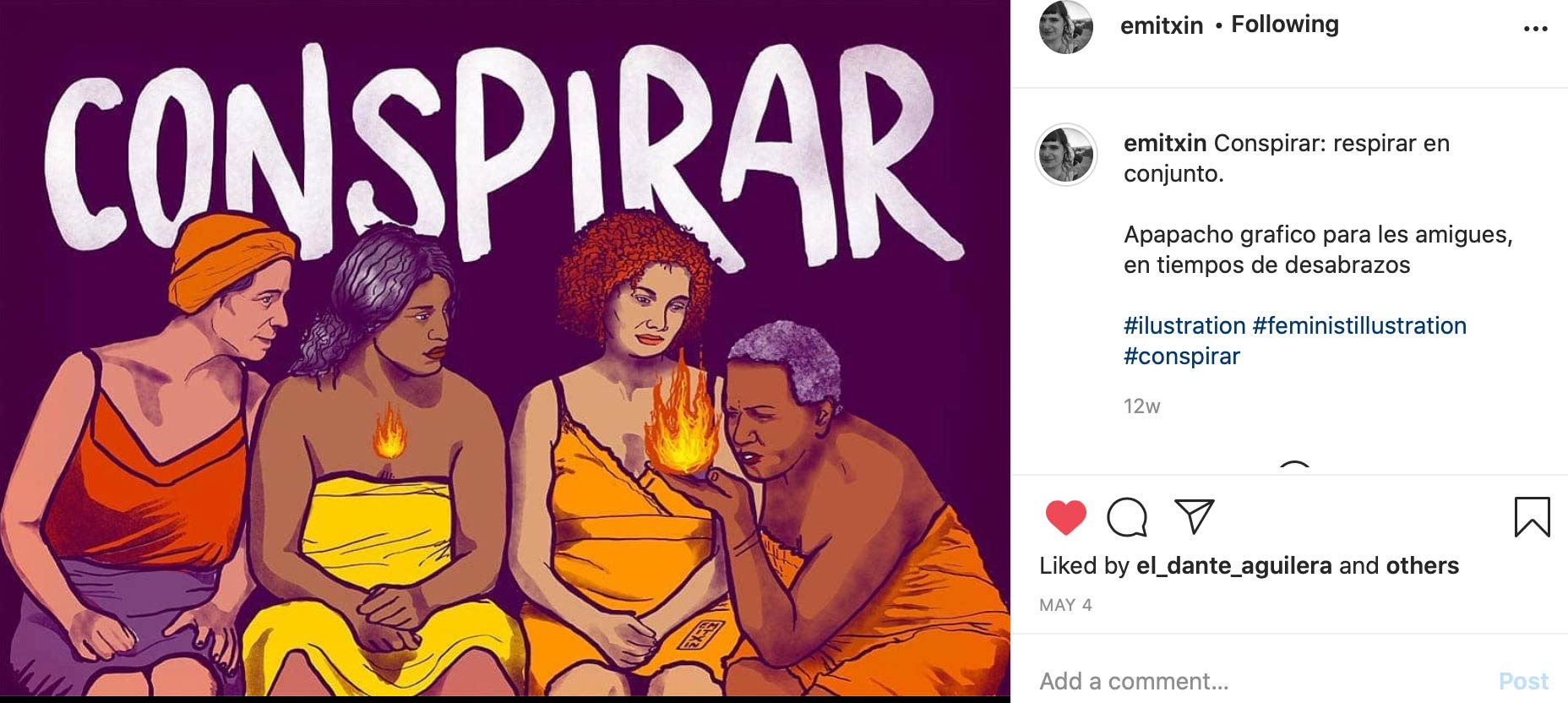
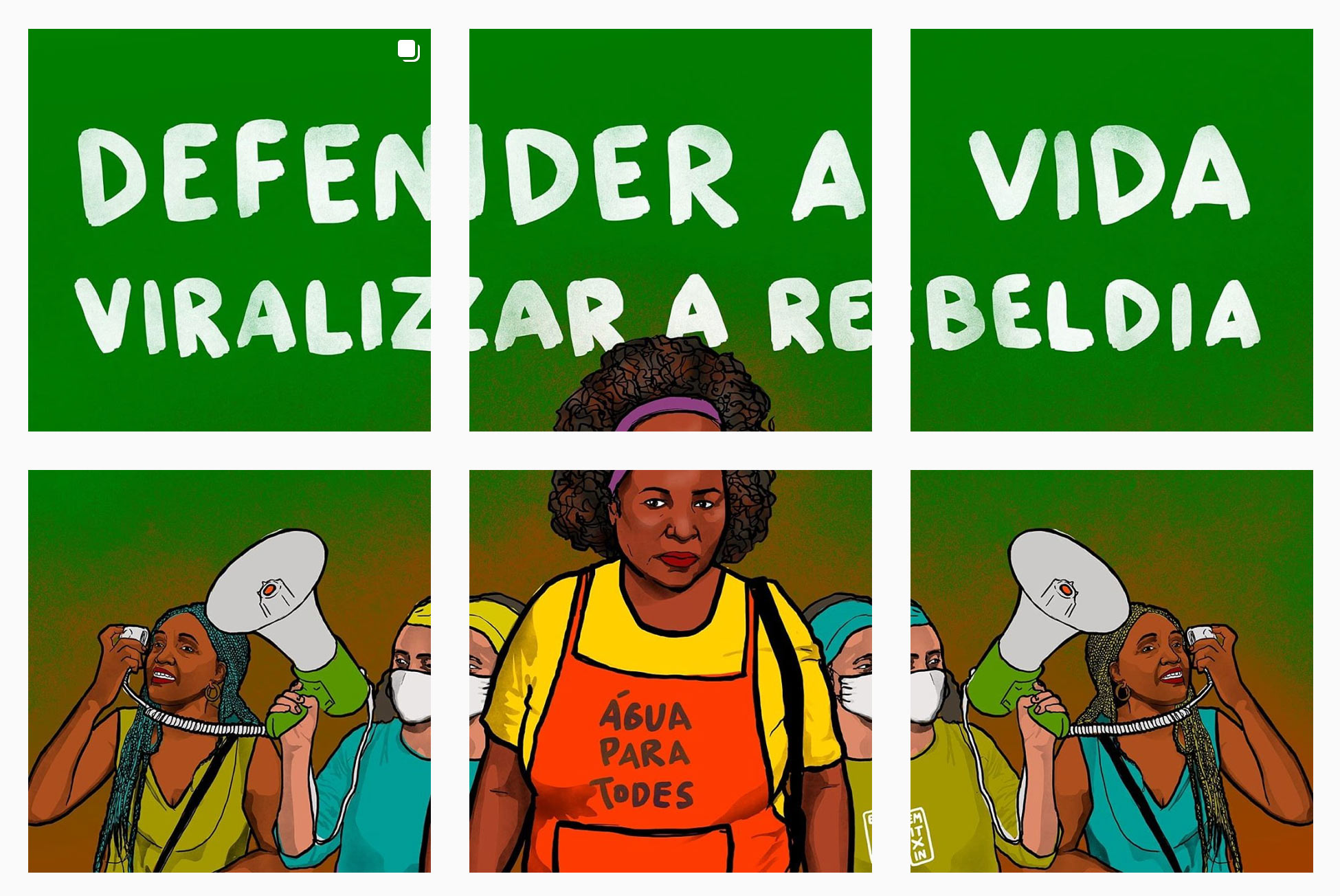
Can we walk through one or two images- for example ‘conspirar’ and ‘defender a vida: viralizar a rebeldia’. What were these made for- what was the intention? How did you choose the images/subjects? What is your process like?
Conspirar fue hecha cuando la cuarentena estaba en su momento más estricto, y, aislades quienes podíamos, pensábamos rabiosamente, día y noche, cómo tejer redes, sostener las que teníamos, pensar y re-pensar la lucha política y social en un contexto de aislamiento y, por supuesto, represión policial. En esos días escuché una entrevista a Sayak Valencia y, entre muchas otras cosas, quedó rondándome en el cuerpo la palabra conspirar: respirar con otres. Pensé en qué significan los trabajos de cuidado, las redes de contención, la defensa de la vida en un contexto donde el capitalismo patriarcal busca apropiarse de estos conceptos (cuidado, vida) para regimentarlo, monetizarlo, y seguir haciendo morir a las poblaciones más vulneradas. En esa vulnerabilidad del aislamiento y la desesperación, nació este “abrazo” para las amigas y compañeras, las que conspiramos todos los días desde todos los territorios del Abya Yala, abrazos como fueguitos, casi desnudas, frágiles, pero juntas.
Defender la vida, viralizar la rebeldíafue una gráfica hecha para la Revista Amazonas proyecto colectivo internacionalista del que formo parte, que se publica simultáneamente en español y portugués, y que conecta mujeres y colectivas desde el el Abya Yala hasta Kurdistán. Esta ilustración acompañó un texto hecho desde la periferia de Sao Paulo, donde las compañeras de la Escola Feminista Abya Yala estaban organizando, en pleno pico de muertes, los acompañamientos materiales (víveres, medicinas, etc) y psicológicos. Una lectura desde el dolor y la lucha, cuando veíamos la muerte alrededor, y donde ni siquiera el acceso al agua potable está garantizado. La consigna, es una forma de disputar al Estado y sus secuaces la retórica del cuidado, el contagio y la vida.
Conspirar was done when the quarantine was at its strictest and most isolating. We furiously thought, day and night, how to weave new networks and sustain the ones that we already had. Thinking and re-thinking the political and social struggle in a context of isolation and quarantine and, of course, police repression. In those days, I listened to an interview with Sayak Valencia who, among many other things, talked about conspiracy. The word conspire remained in my body: to breathe with others. I thought about care work, containment nets, the defense of life and what that means in a context where patriarchal capitalism seeks to appropriate these concepts (care, life) to regiment it, monetize it, and continue to kill the most vulnerable populations. In that vulnerability of isolation and despair, this “hug” was born for the friends and comrades, those of us who conspire every day from all the Abya Yala territories, hugs like little fires, almost naked, fragile, but together.
Defender la vida, viralizar la rebeldía was a graphic made for the magazine Revista Amazonas, a collective, internationalist, project of which I am a part, which is published simultaneously in Spanish and Portuguese, and which connects women and groups from Abya Yala to Kurdistan. This illustration accompanied a text about work being done on the outskirts of Sao Paulo, where the Escola Feminista Abya Yala was organizing at the height of death, providing material (food, medicine, etc.) and psychological support. It was a depiction of the pain and struggle when we saw death around us, and where even access to drinking water is not guaranteed. The slogan is a way of challenging the state and its henchmen about the rhetoric of care, contagion, and life.

Your color work is incredible- you use bright and vibrant colors in a way that feels really cohesive. How do you go about choosing colors- is it a deliberate process? intuitive? experimental?
Me gustan los colores vibrantes, ¡me pasan por el cuerpo! Debería probar otras cosas jeje. Hay una elección política de priorizar los verdes y violetas. Suelo buscar el contraste, por lo que parto de una tríada de colores. A partir de ahí, la búsqueda es intuitiva, intentando mantener la cohesión y la coherencia visual y conceptual (qué transmiten generalmente diversos colores). Los tierras y rojos también están presentes, tanto por la recurrencia del fuego, como por las representaciones identitarias del Abya Yala.
I like vibrant colors, they pass through my body! I should try other things, hehe. It is a political choice to prioritize greens and purples. I usually look for contrast, so I start from a triad of colors. From there, the search is intuitive, trying to maintain cohesion and visual and conceptual coherence (which are generally transmitted by different colors). Earth tones and reds are also present, both because of the recurrence of fire, and because of the representations of identity of Abya Yala.
How do you get your work out there? Illustration? Street art? Printing? IG? Selling work on the street?
Mi trabajo está presente fundamentalmente en las calles, con el “parche” (así le llamamos entre artesanes al puesto callejero) en movilizaciones, ferias artesanales y espacios públicos; pero también, al formar parte de muchos de los carteles a convocatorias feministas, aparecen mezcladas entre consignas y llamamientos. Hacemos pastesups con amigues gráfiques también y, por supuesto, la difusión en el territorio virtual (que me ha permitido ver la ilustraciones pegadas en las calles de diferentes partes del país y otros países; rediseñadas, intervenidas, ¡imágenes vivas!)
My work is present mainly in the streets, and also at the “patch”–that’s what we call the street stall for artisans at mobilizations, craft fairs, and in public spaces. There they reside among many posters, slogans, and graphics for feminist struggles. We also wheat paste the images with other graphics as well and, of course, they are spread in the virtual world (which has allowed me to see the illustrations pasted on the streets of different parts of the country and other countries; redesigned, intervened, and live images!)
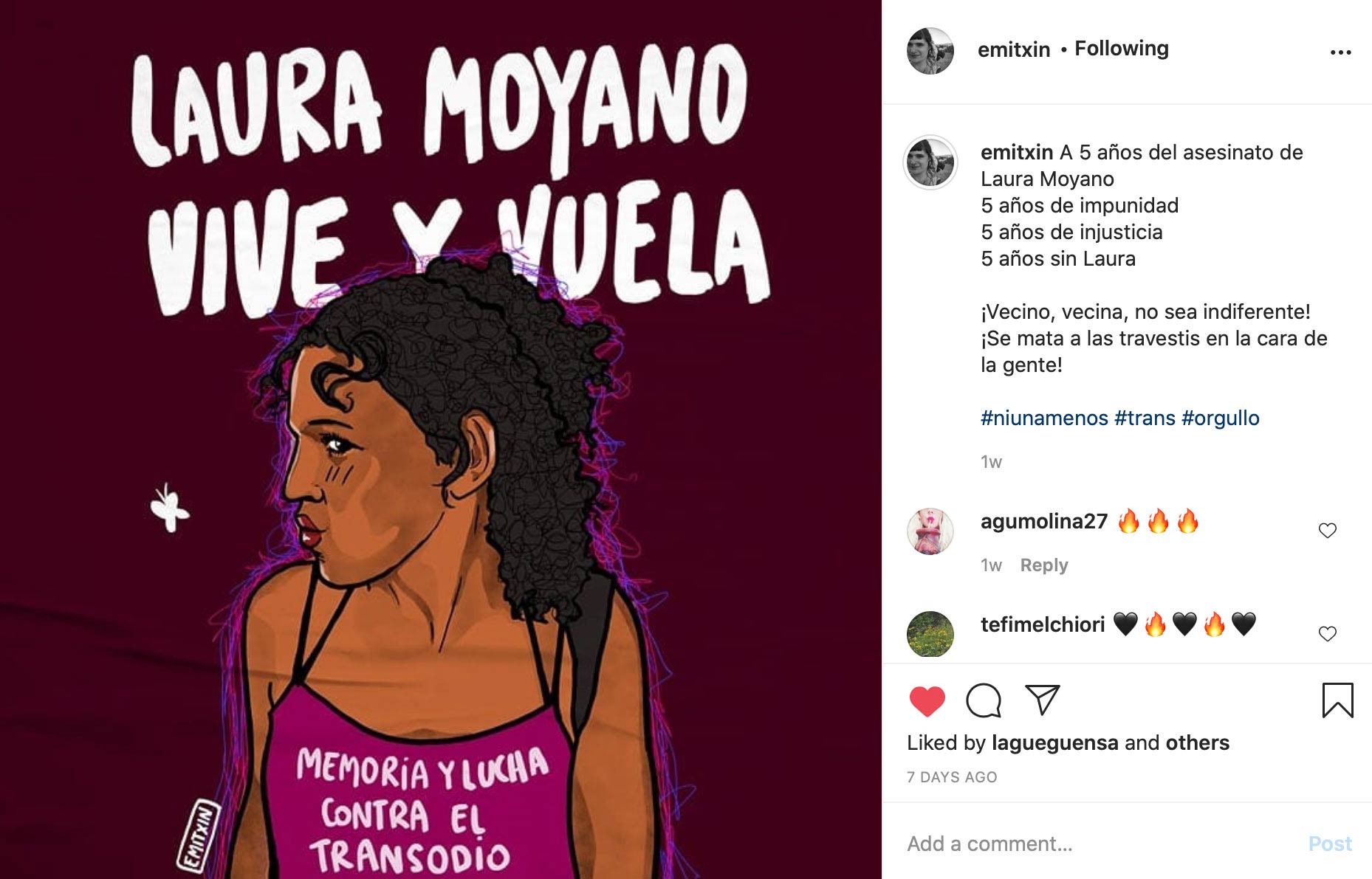
Are you working on any projects right now that you are excited about and want to share?
Al inicio de la cuarentena lanzamos una convocatoria colectiva de escritura y gráfica llamada “Rejunte urgente para otros fines del mundo son posibles”; fue una convocatoria fugaz (dos semanas) que buscaba retratar los primeros días de nuestro primer encierro global. El resultado fue una publicación libre, sin selección de material con casi 40 colaboraciones de diferentes países. Una radiografía cruda y anárquica. Estamos dándole forma a una segunda convocatoria para este nuevo momento político.
También estamos terminando un librito para las infancias, un regalo de lxs artistas gráficxs de Córdoba para dibujar, armar y jugar.
Y por último, estoy comenzando una colaboración con La Reci (librería y editorial autogestiva de Chiapas, México). Agradezco a la vida y a las redes el estar permanentemente en proyectos colectivos y libres.
At the beginning of the quarantine we launched a collective call for writing and graphics called ‘Rejunte urgente para otros fines del mundo son posibles’. It was a quick call (only two weeks) that sought to portray the first days of our first global confinement. The result was a free publication, without curation with almost 40 collaborations from different countries–a raw and anarchic x-ray of the moment. We are now shaping a second call for this emerging political moment.
We are also finishing a booklet for children, as a gift from the graphic artists of Córdoba for them to draw, assemble, and play with.
And finally, I am starting a collaboration with La Reci (autonomous bookstore and publisher from Chiapas, Mexico). I thank life and networks for being permanently collective and free projects.
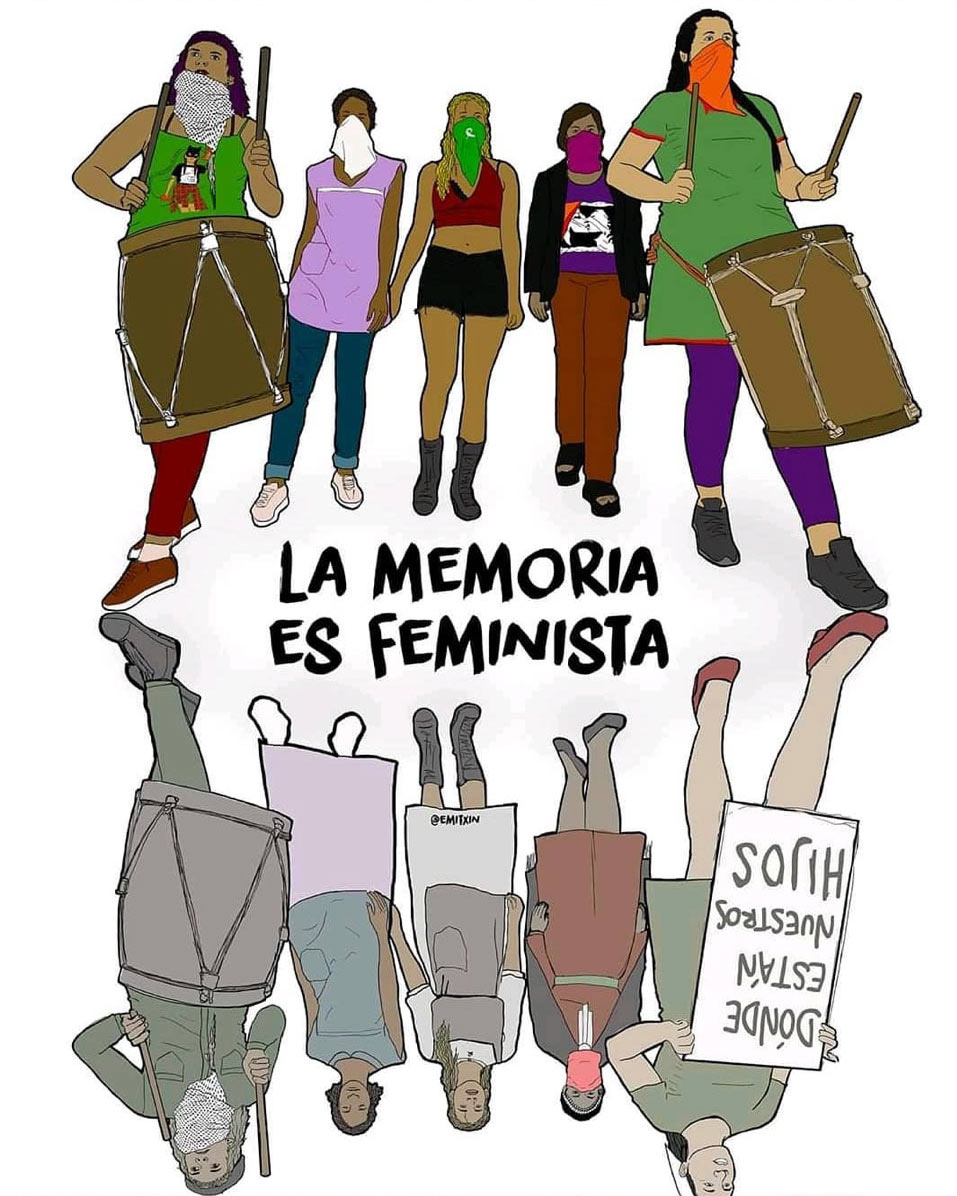
Who are some artists (living or dead) from Cordoba/Argentina/Abya Yala that have inspired you, that everyone should know about?
Pienso en Semanca Huitzilin, hermana muralista, grabadora y bordadora de México. En la Cabrita del Monte, de Córdoba pero viajera, que en sus gráficas late intenso el corazón de Abya Yala. También los proyectos colectivos de Juan Panadero en Sinaloa Mex, y la Catalina Clandestina en el interior de Córdoba.
I think of Semanca Huitzilin, a sister muralist, engraver, and embroiderer from Mexico. La Cabrita del Monte, from Córdoba but a traveler, within whose graphics the heart of Abya Yala beats intensely. Also the collective projects of Juan Panadero in Sinaloa Mex, and the Catalina Clandestina in the interior of Córdoba.

Anything else you want us to know?
Creo que ya escribí un montonnn jejeje.
I think I already wrote a lot hehehe.
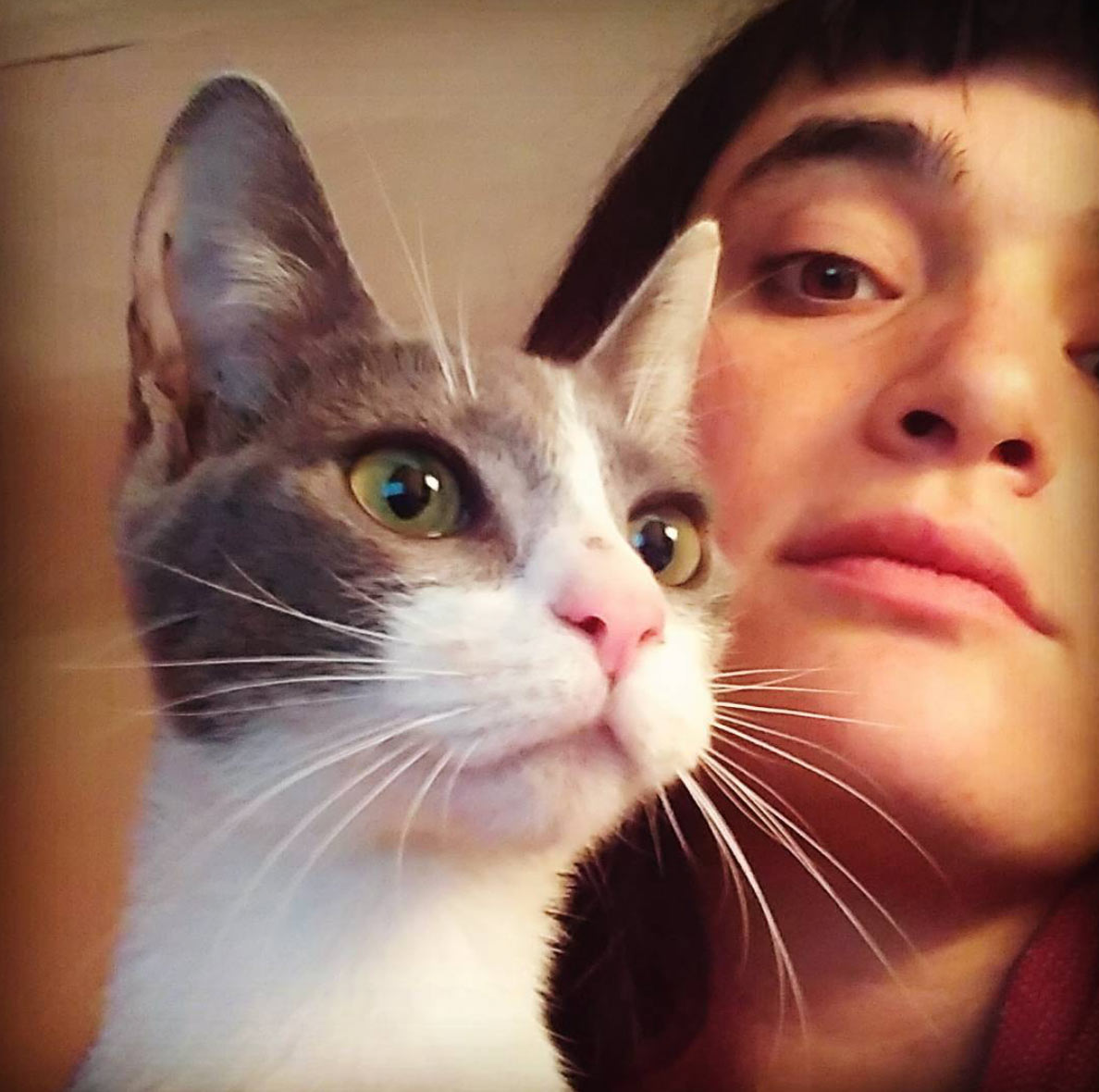
You can see more of Pilar’s work on instagram
or
https://emitxin.threadless.com
(translation by me and any errors are mine!)
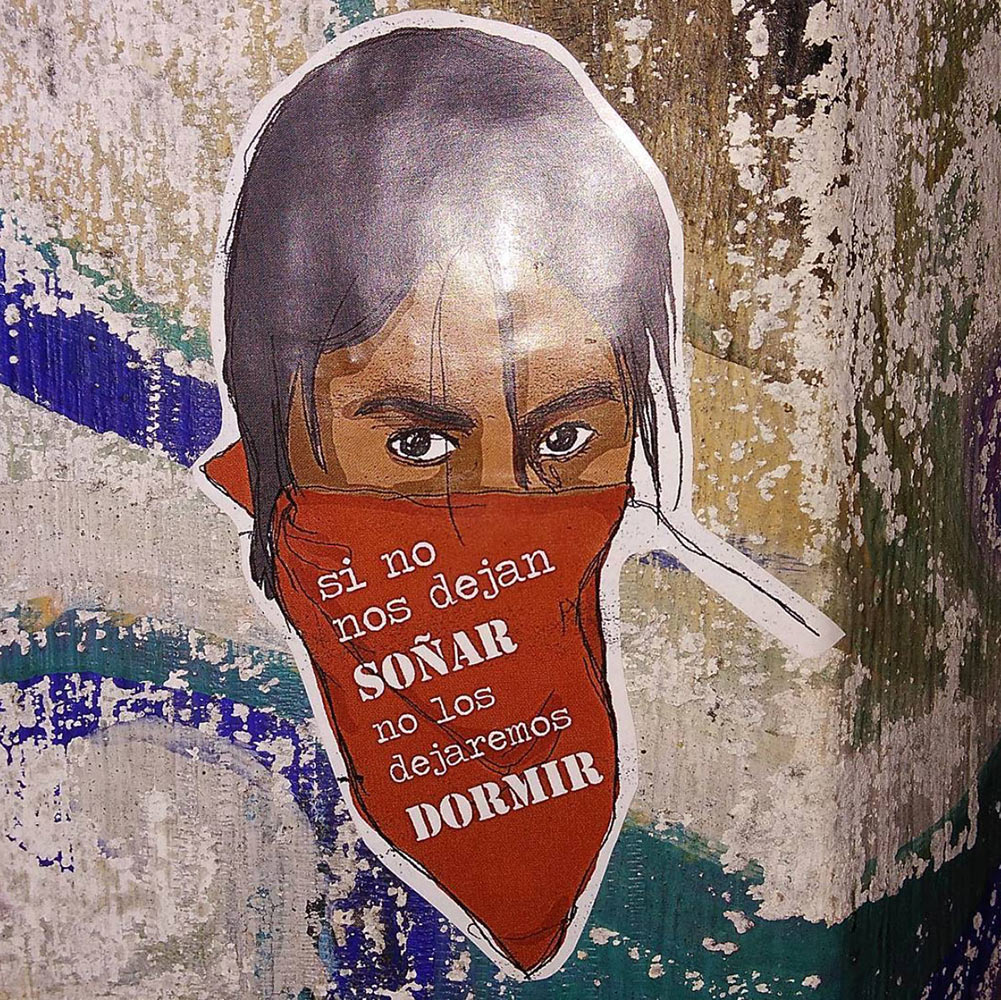

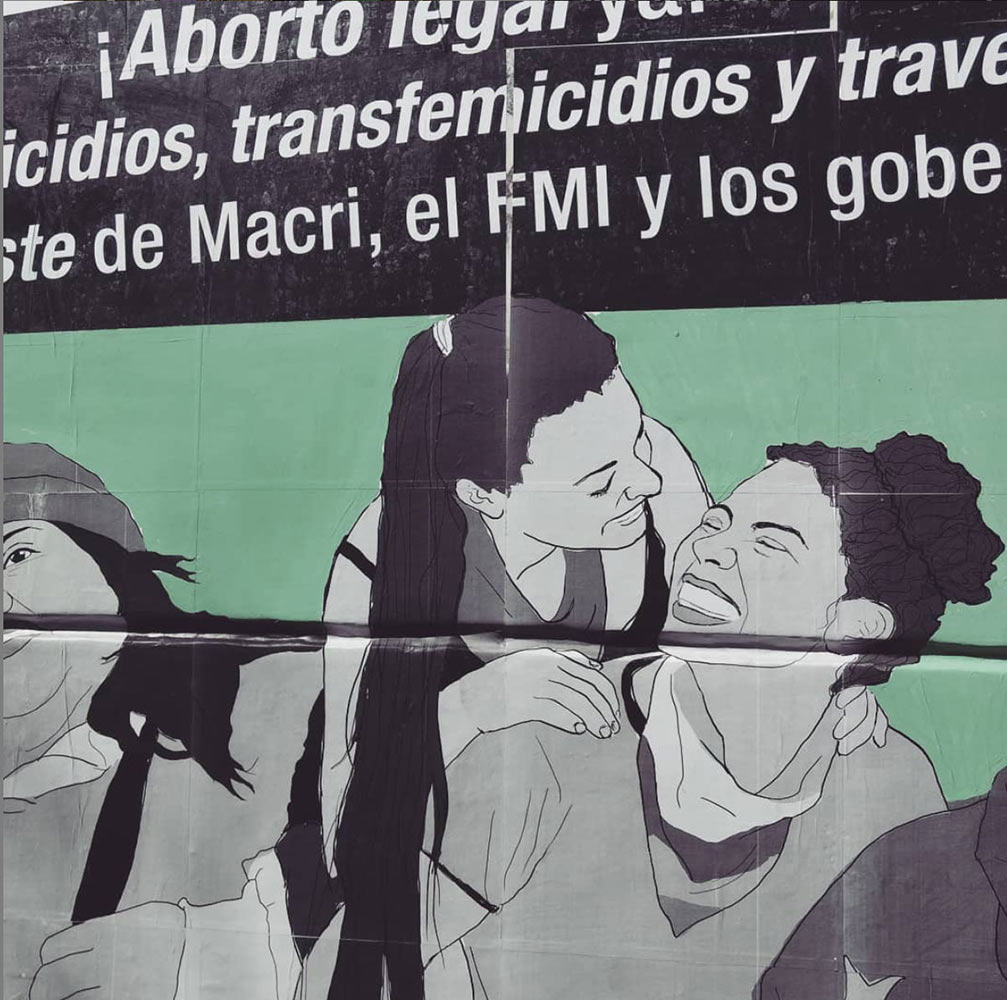
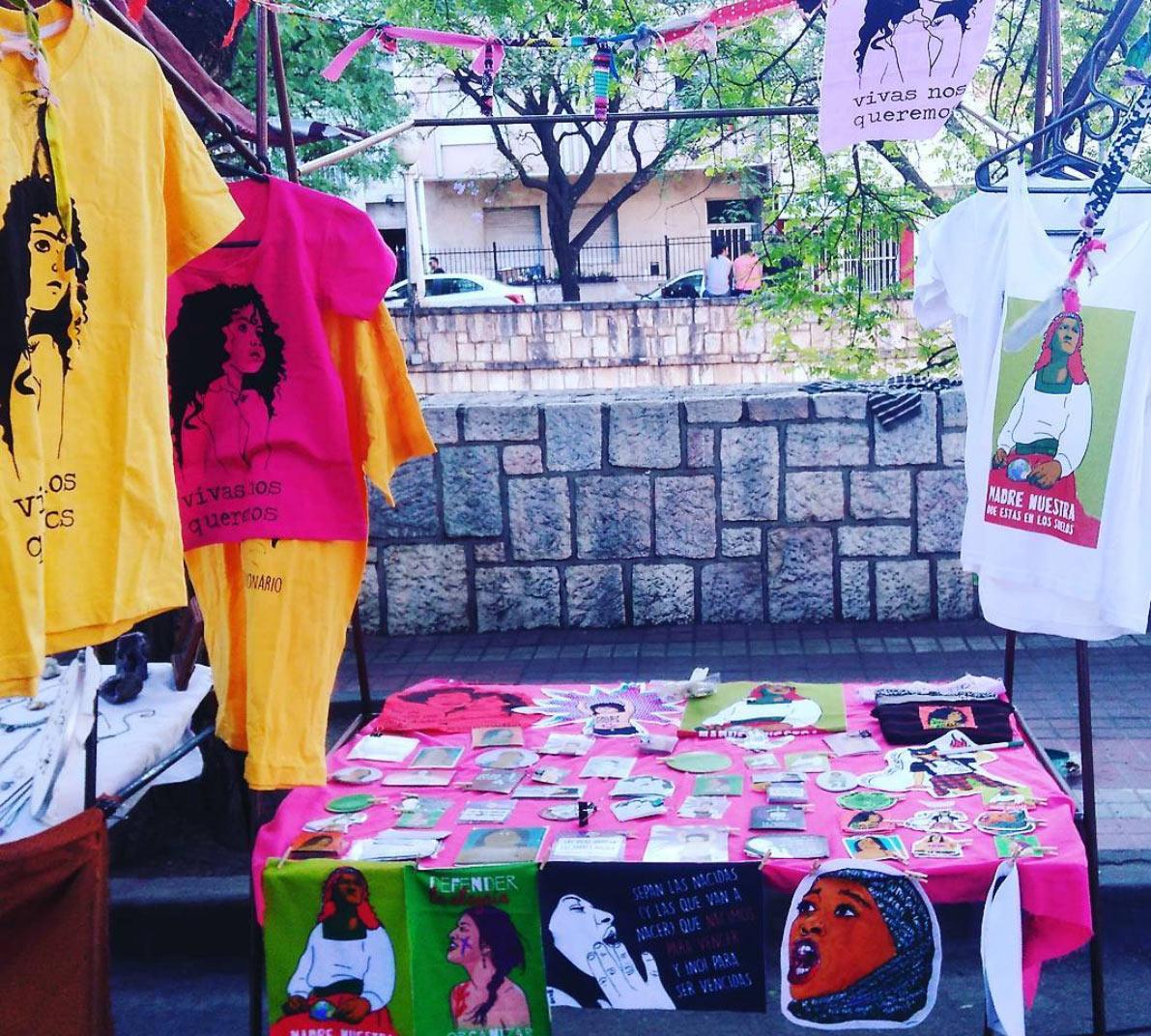
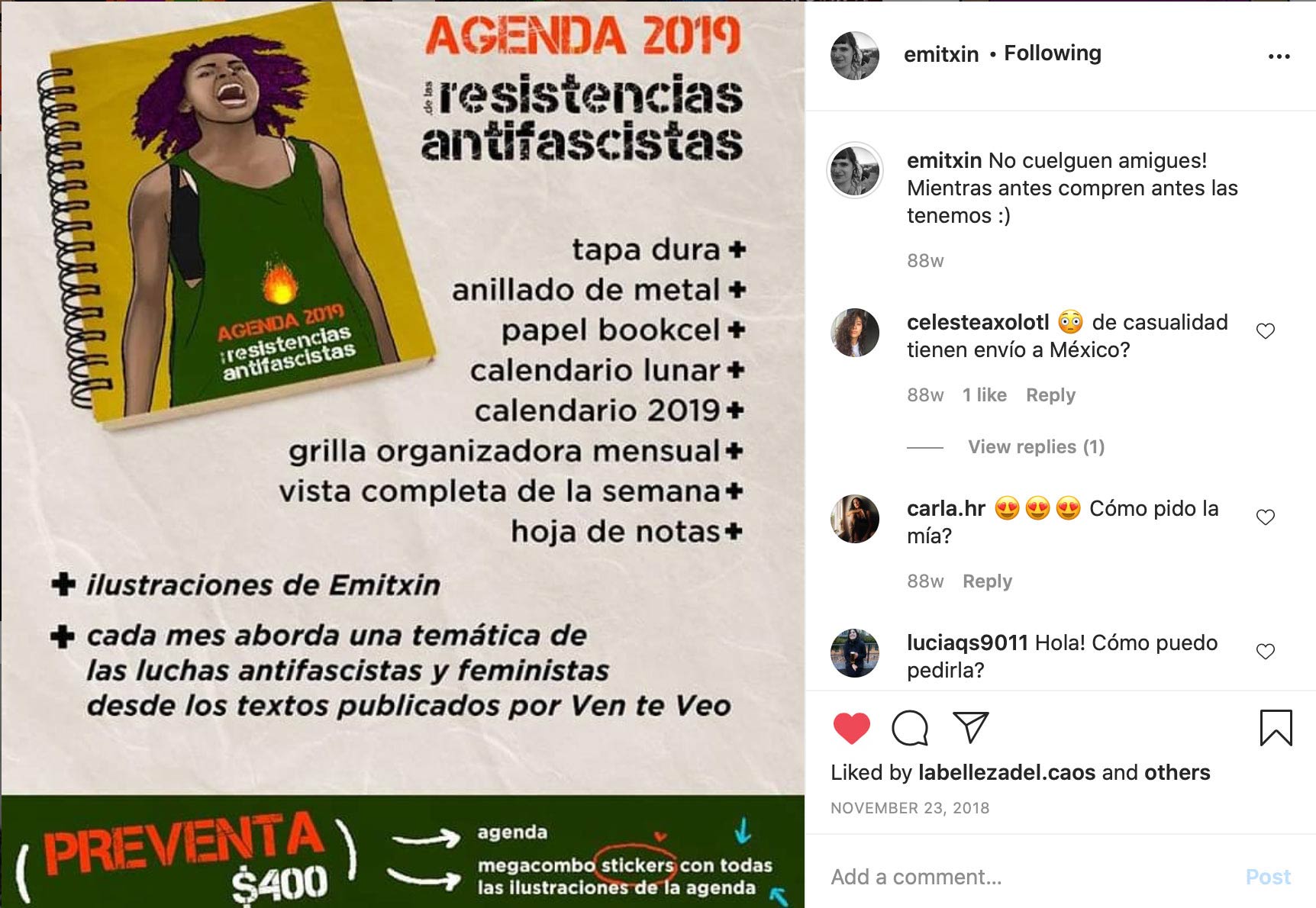








I loved everything